Getting Started with Webhook Templates #
Webhooks are instrumental for integrating the Retainly app with other applications and services. They can be configured to make HTTP calls to the desired endpoints, allowing you to automate workflows and keep systems in sync. In this documentation, we’ll guide you through creating Webhook templates in the Retainly app.
Creating a Webhook Template #
To create your Webhook templates, follow these steps:
1. Navigate to the Templates Section: Start by navigating to the Templates section in the Retainly app and then select Webhooks.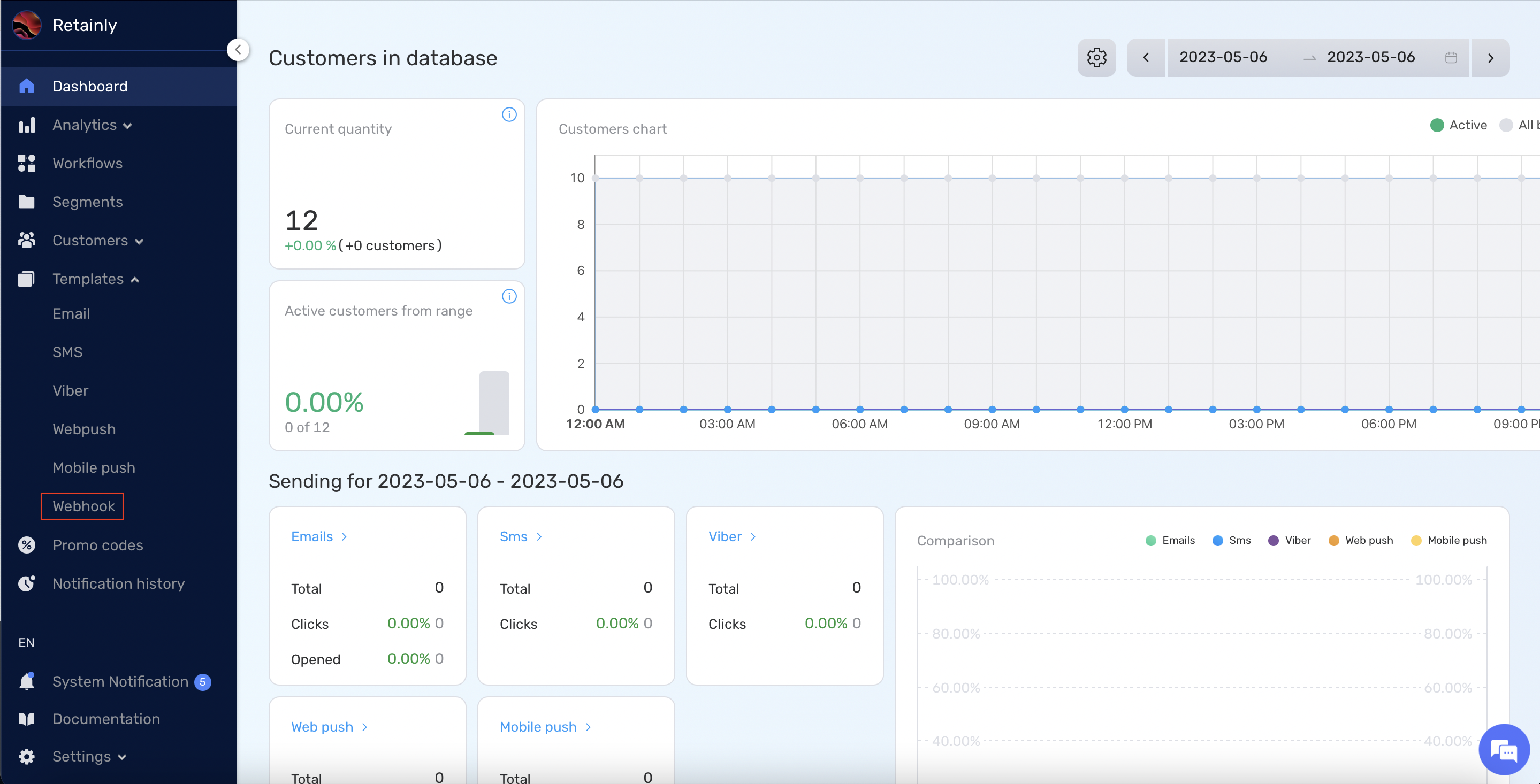
2. Click the Create Button: Click on the Create button to commence the process of setting up your new Webhook template.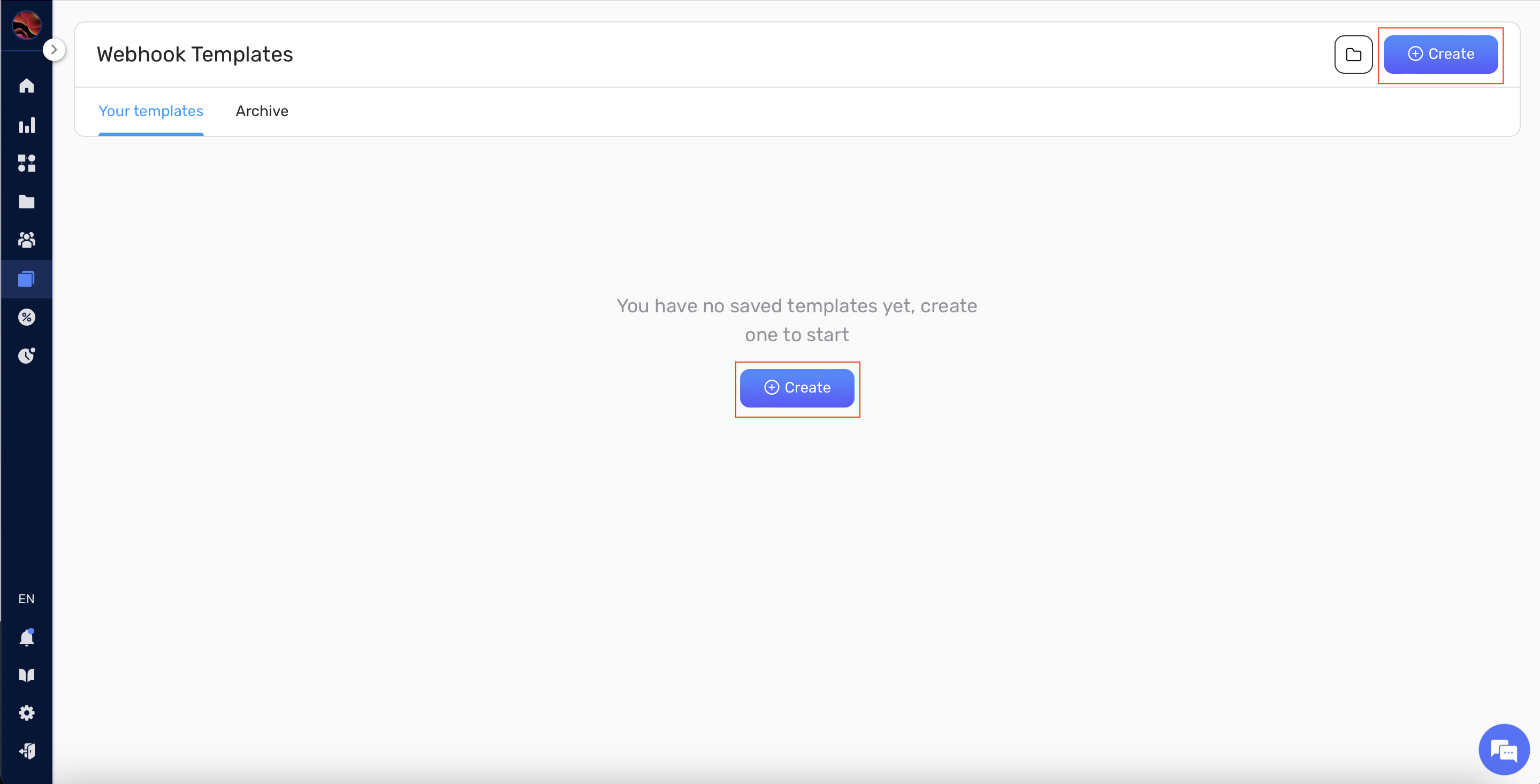
3. Give your template a name: Give your webhook template a unique name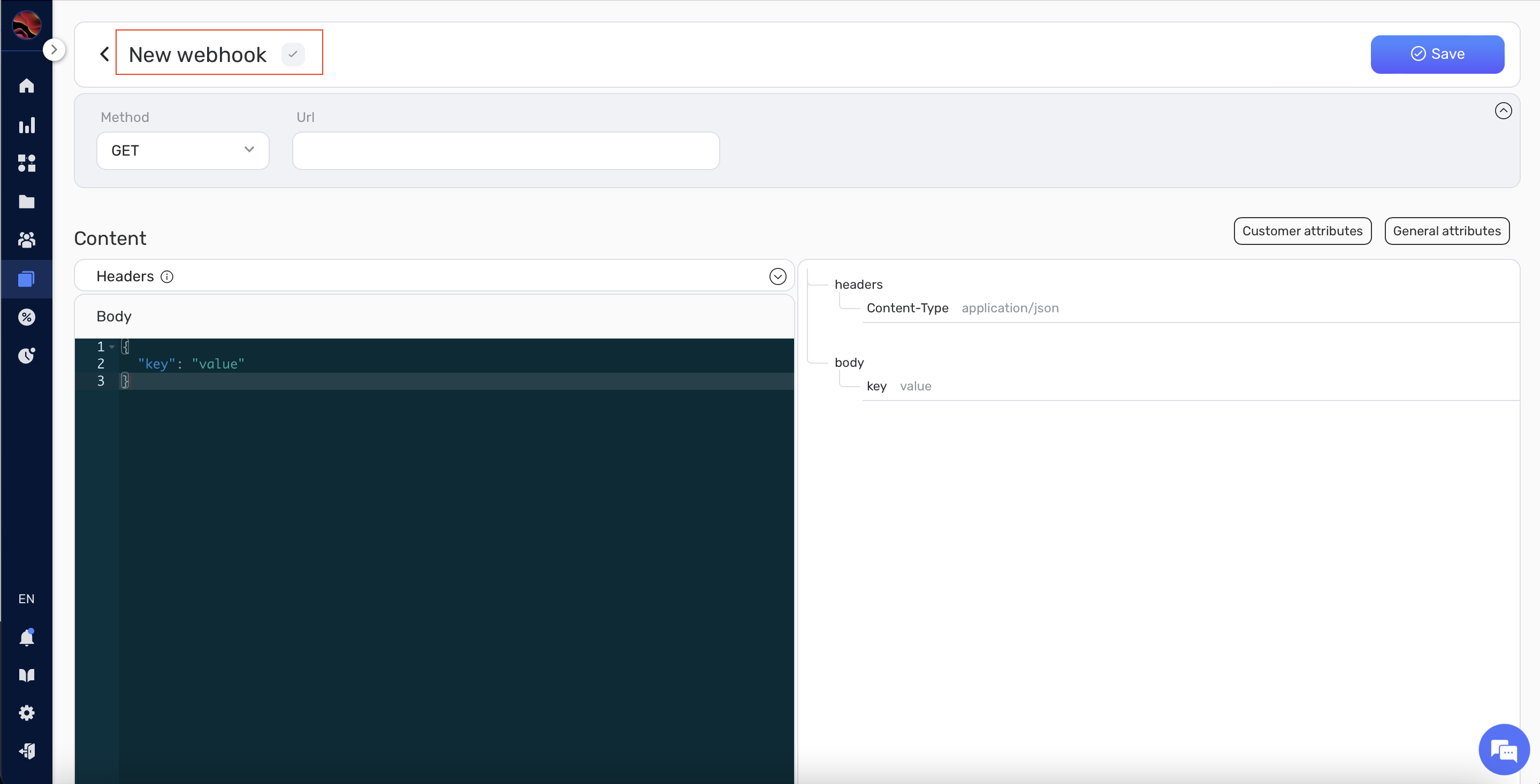
4. Configure the Webhook: At this point, you will be presented with various fields to configure your Webhook:
- Method Selector: Choose the HTTP method for the API call. The available options are POST, GET, DELETE, PUT, and PATCH.
- URL Input Field: Provide the request URL where the Webhook should send the HTTP request.
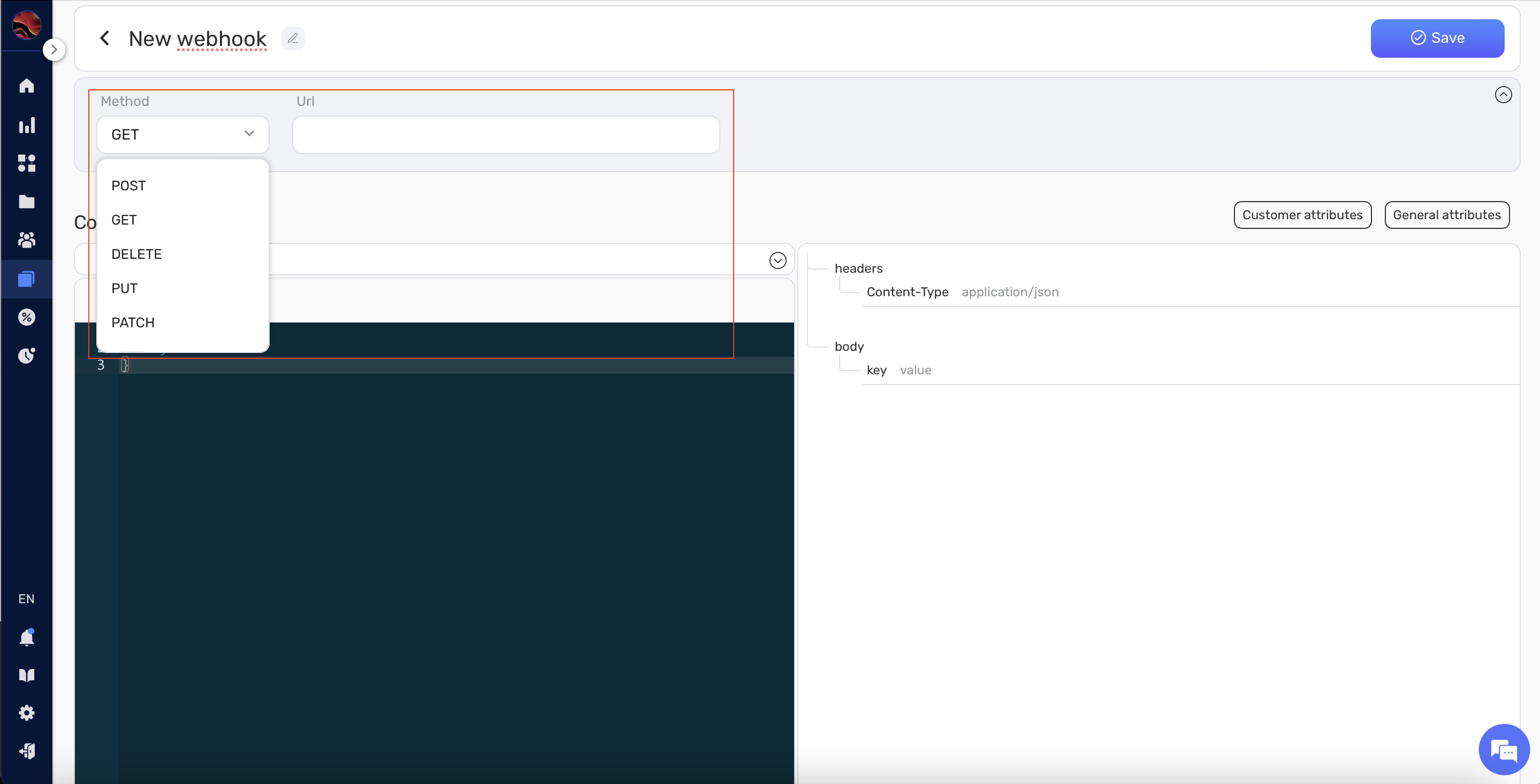
- Headers Section: Define the headers for the HTTP request. This is typically used to set content type, authentication, or other metadata. Write or paste the relevant code for the headers.
- Body Section: Write or paste the code for the body of the HTTP request. This is primarily used for POST and PUT methods to send data.
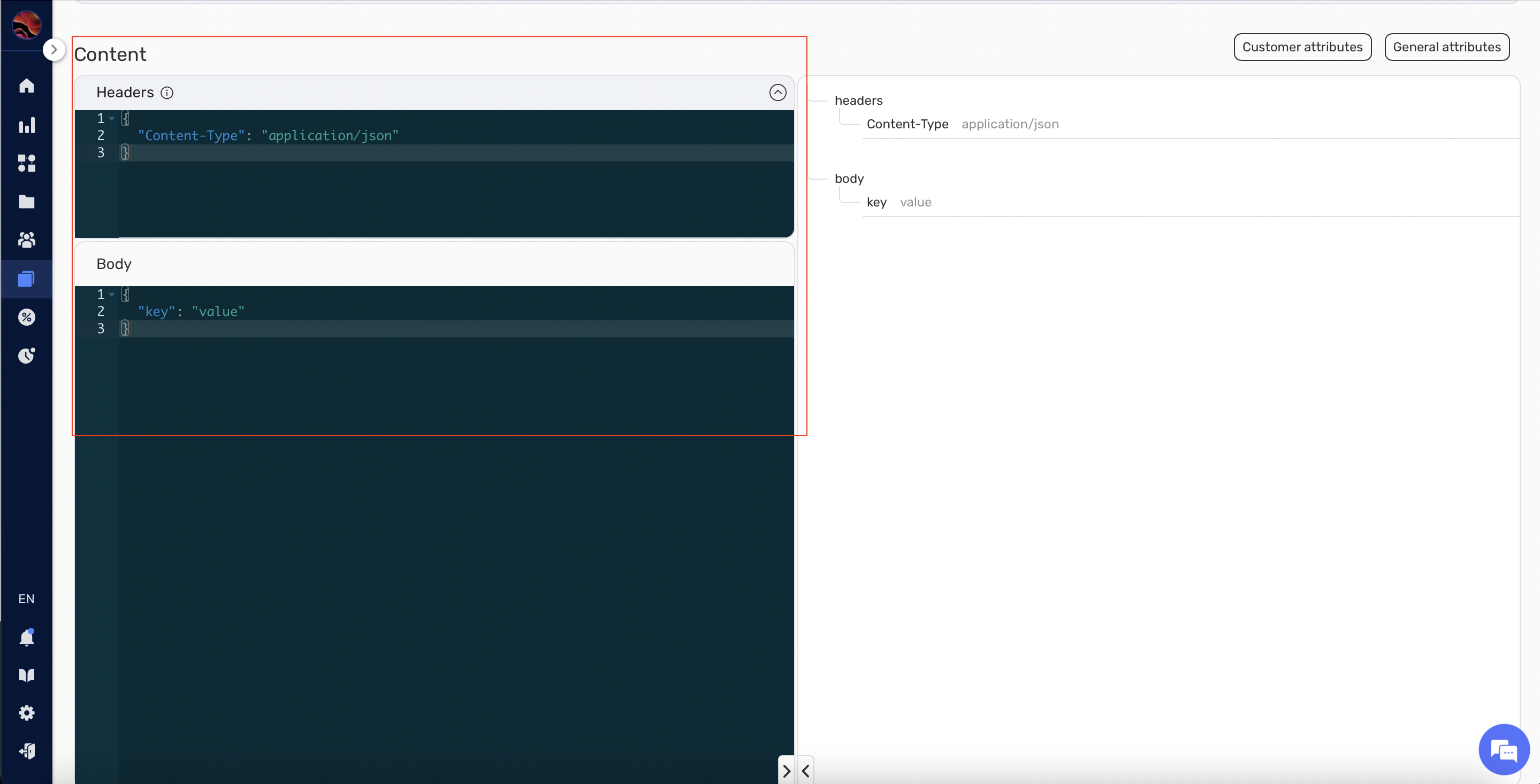
5. Preview Your Webhook: Review your webhook to ensure everything is set correctly.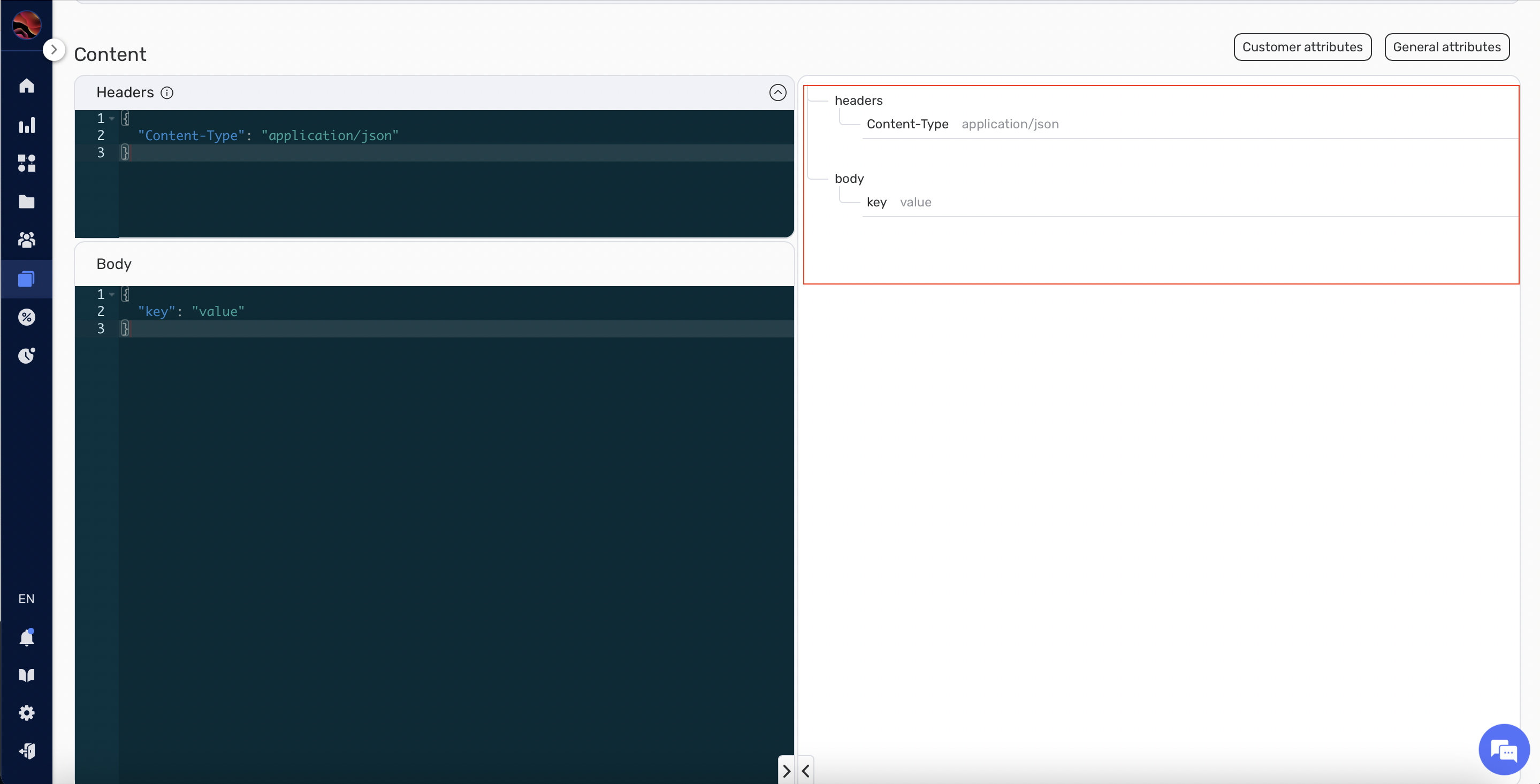
6. Save Your Webhook Template: Once you are satisfied with the configuration of your Webhook template, click the Save button. Your new template will now be listed on the main Webhooks templates page.
Use Cases for Webhook Templates #
Triggering Bonuses: #
Webhooks can be set up to automate the process of granting bet bonuses in an iGaming scenario. If your platform offers bonuses based on the amount wagered, number of bets placed, or type of bet, you can set up a webhook to trigger bonuses accordingly.
Example Steps:
a. Create a Segment to monitor betting activities such as the total amount wagered, number of bets placed, or type of bets.
b. Configure the webhook to send an HTTP request to your bonus system’s endpoint URL.
c. Configure a workflow in which, when a player reaches the defined conditions (e.g., placing a certain number of bets, wagering a certain amount, or placing a specific type of bet), the webhook sends an HTTP request to your bonus system, triggering the bet bonus.
Free Spins: #
Similar to triggering bonuses, webhooks can be used to automatically grant free spins to players in online casinos. This can be done when certain conditions are met such as logging in daily, depositing a certain amount, or referring a friend.
Example Steps:
a. Set up a Segment to monitor these activities.
b. Configure the URL to point to your gaming system’s free spins functionality.
c. Configure a workflow in which, when the conditions are met, the webhook sends an HTTP request, automatically granting the free spins to the player.
Sending Client List to Backend Systems: #
Webhooks are also great tools for ensuring that your customer data is up to date across all your systems. For instance, when a new customer signs up or an existing one updates their details, you can use a webhook to send this information to your backend systems instantly.
Example Steps:
a. Set up a Workflow to monitor customer sign-ups and information updates.
b.Add a webhook to the workflow that will direct to your backend system’s endpoint URL.
c. Each time a new customer signs up or updates their information, the webhook will send an HTTP request to your backend system, ensuring it stays updated.
Order Processing: #
If you run an e-commerce platform, you can configure webhooks to listen to order events. When a customer places an order, a webhook can be triggered to send the order details to your order management or fulfillment system for processing.
Example Steps:
a. Create a Workflow to monitor order events.
b. Configure the webhook to send HTTP requests to your order management system’s endpoint URL.
c. Add this webhook to your workflow.
c. Each time an order is placed, the webhook will send an HTTP request to your order management system, initiating the order processing.
Webhooks are a powerful tool for automating a wide variety of workflows, helping to ensure data consistency, and integrating different systems. With the Retainly app’s Webhook templates, configuring them to meet your specific needs is a simple and straightforward process.
Congratulations! #
You have successfully created a Webhook template in the Retainly app. Utilize these templates to automate workflows, sync data between systems, and harness the power of API integrations. Happy integrating!


